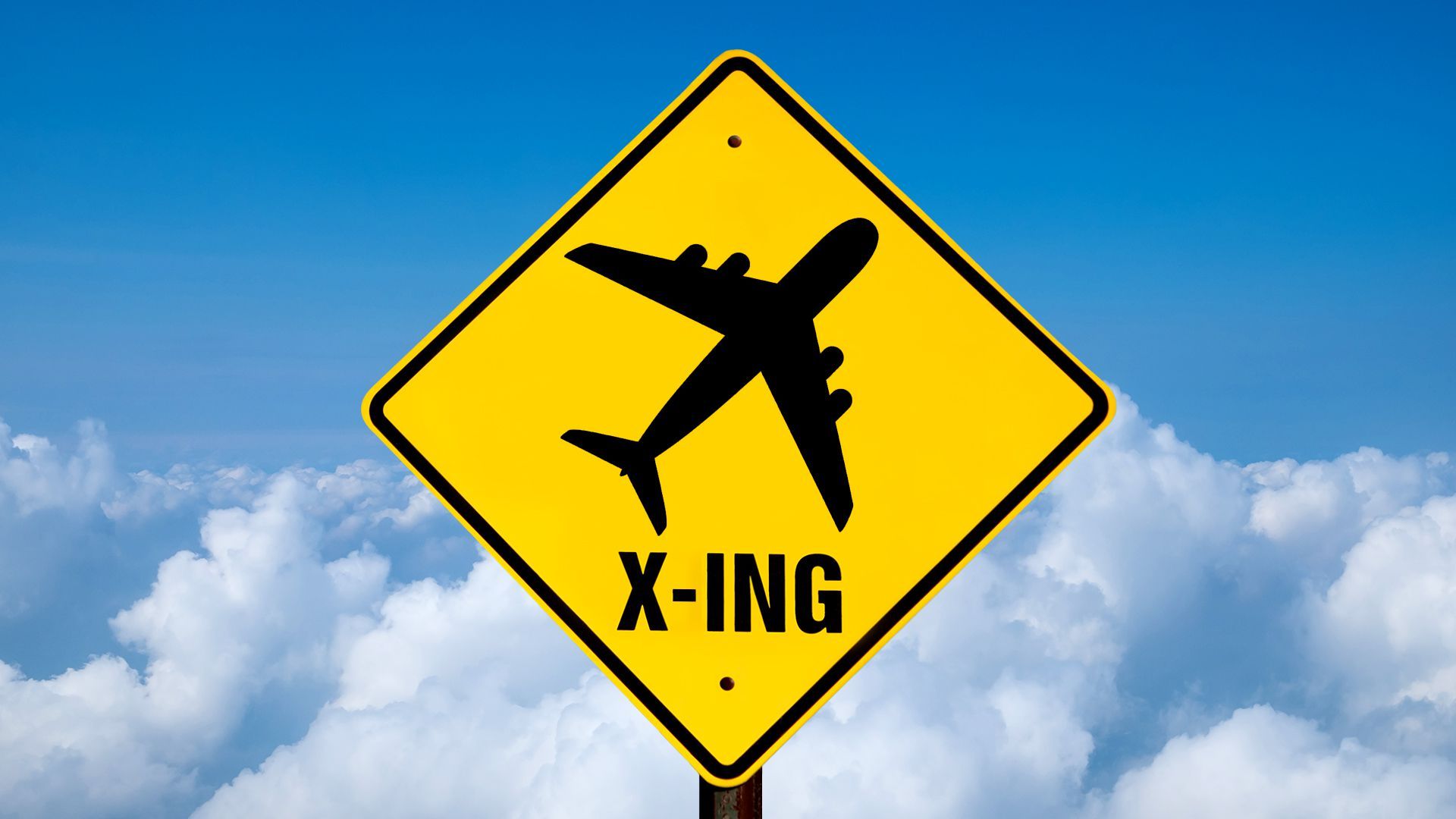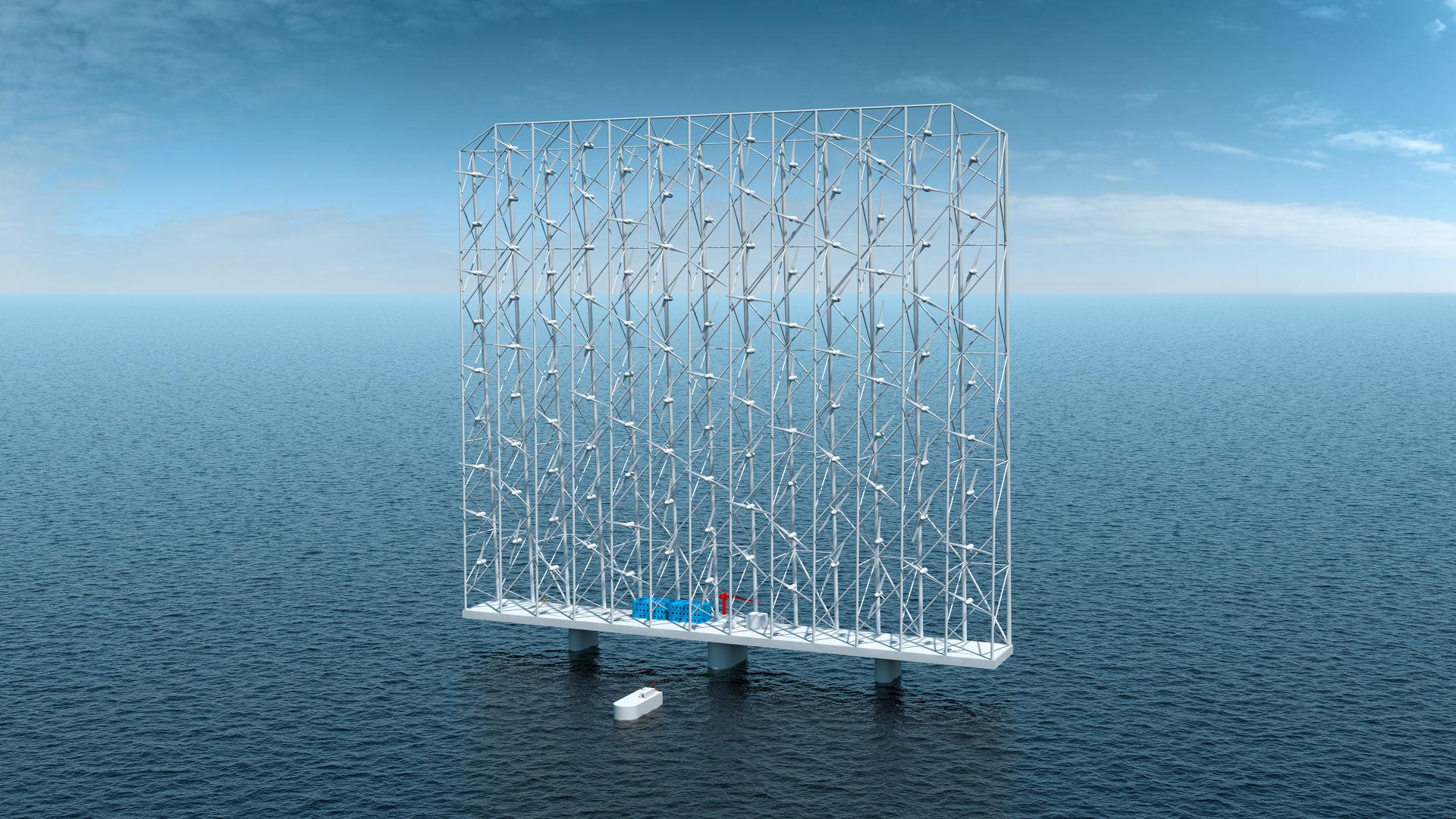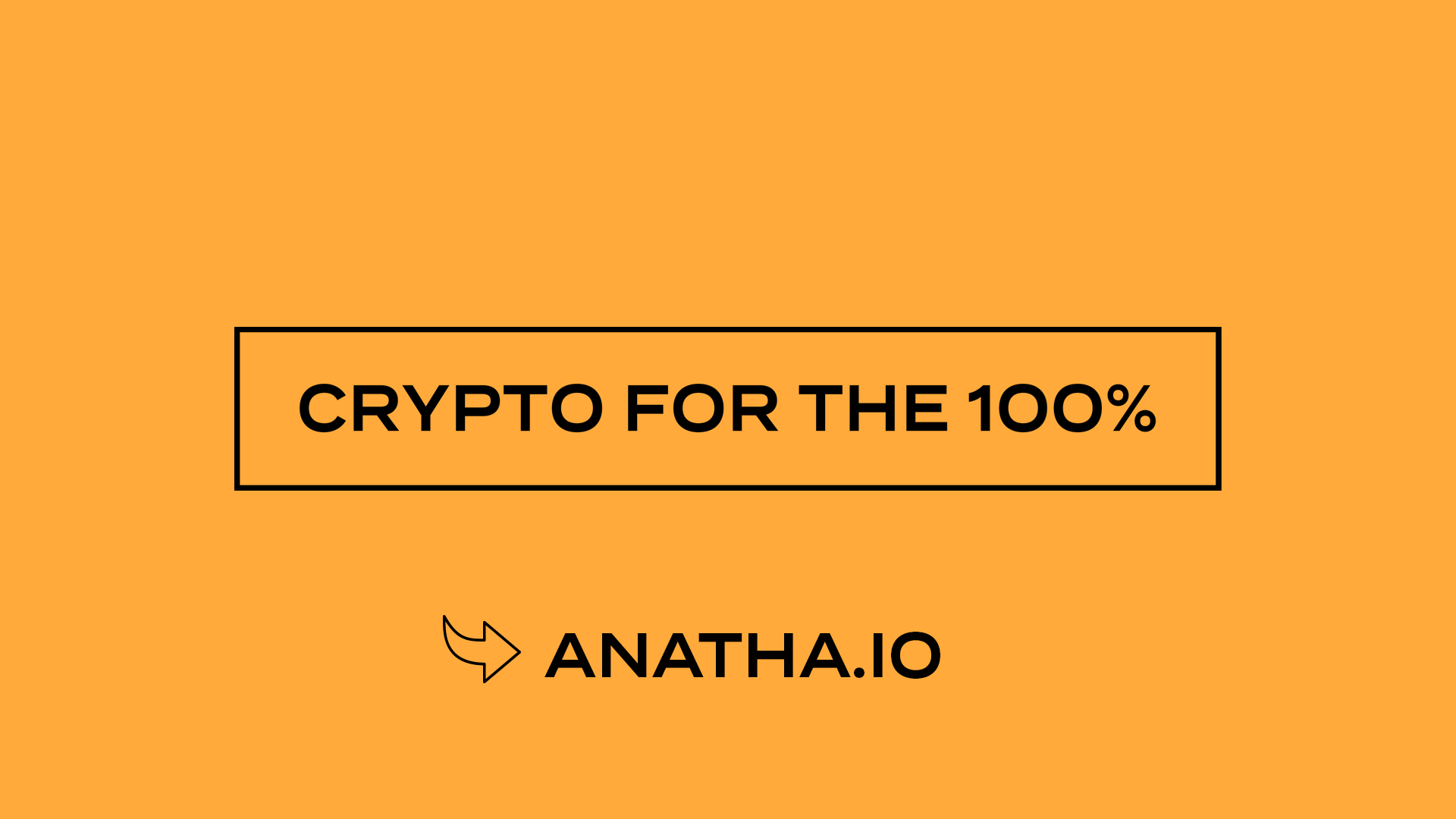| | | | | | | Presented By Anatha | | | | Axios What's Next | | By Jennifer A. Kingson, Joann Muller and Erica Pandey ·Sep 20, 2021 | | Look up! There are lots of things flying above you — not only birds and airplanes. Joann Muller has details on what the FAA is doing about it. - Today's What's Next photo comes from our own trend-spotter Erica Pandey!
- Now it's your turn: Send a photo you took to whatsnext@axios.com and tell us why it represents our bold future.
Today's Smart Brevity count: 1,066 words ... 4 minutes. | | | | | | 1 big thing: The skies are getting crowded |  | | | Illustration: Annelise Capossela/Axios | | | | Planes used to be the only aircraft crisscrossing the sky. Now there are drones, more frequent rocket ships and — soon — flying taxis, elbowing their way into the National Airspace System, Joann writes. Why it matters: Managing the congestion up above is becoming an urgent mission for America's traffic cops in the sky. While the Federal Aviation Administration has a stellar safety record when it comes to commercial aviation, its challenge is infinitely more complex today. State of play: The FAA manages about 45,000 flights per day, including commercial airlines, cargo carriers and private planes. - There are roughly 870,000 registered drones in the U.S. — four times the number of commercial and private planes.
- Rocket launches are a regular thing now too, with spacecraft carving their way into orbit on a biweekly basis.
- Within a couple of years, urban air mobility companies also will begin testing their electric air taxis in several cities.
- Managing it all is like a "3D chess game," Tim Arel, deputy chief operating officer at the FAA's Air Traffic Organization, tells Axios.
What's happening: In Europe, authorities aim to segregate drones from other types of aircraft. But in the U.S., safely integrating them into the national airspace is the goal. - But the FAA doesn't want air traffic controllers talking to every single drone operator.
- "If everybody turned on a transponder, it would flood our scopes, and we wouldn't see anything in some cities," says Arel.
- Instead, its plan is to establish a drone traffic management system that would complement the FAA's existing air traffic management system.
- The FAA will let drone operators know where they can and cannot fly, and then it's up to them to manage their operations safely within those constraints — without contacting air traffic controllers.
Where it stands: Pieces of that puzzle are already falling into place. - Working with the drone industry, the FAA created an automated data exchange system that enables drones to safely operate in controlled airspace as long as they are at or below 400 feet.
- Last December, the agency announced it would allow drones to fly at night and over people — a significant step closer to drone deliveries.
- In June, the FAA activated a new space data integrator that allows it to track a rocket in near-real time so air traffic controllers don't have to reroute planes as often.
What's next: The FAA is working on new rules in the next few years that would govern drones operating over the horizon, or beyond visual line of sight, which could unlock much broader use of uncrewed aircraft. Read the rest. |     | | | | | | 2. The pandemic made our workweeks longer |  | | | Illustration: Annelise Capossela/Axios | | | | The average American's workweek has gotten 10% longer during the pandemic, according to a new Microsoft study published in Nature Human Behaviour, Erica writes. Why it matters: These longer hours are a key part of the pandemic-induced crisis of burnout at U.S. firms — and workers are quitting in droves. Between the lines: Microsoft calculated the length of the workday based on the time between Teams users' first email, message or work call and their last. So the longer workweeks don't necessarily mean we're working more, the study says. - People may be spending more time logged on because they are distracted with other obligations while working from home and so are less productive.
- This contributes to burnout because the lines between work life and home life are increasingly blurred, experts say.
What to watch: The pandemic has pushed a growing number of firms — and entire nations — to experiment with four-day workweeks. - Studies have shown that workers are happier and more focused with shorter workweeks. Therefore they're more productive and just as much work gets done.
- Those experimenting with this structure are hoping it'll address the pandemic burnout.
Share this story. |     | | | | | | 3. This climate change fighter has lots of fans |  | | | A floating multi-wind-turbine system. Photo: Wind Catching Systems AS | | | | A Norwegian company has come up with a radically different design for offshore wind turbines that could help the world achieve its renewable energy goals. Why it matters: Wind power is cheap and efficient, but the strongest winds are far offshore, in deep waters, where it's difficult to drive a turbine into the seabed. Floating wind farms can be anchored farther into the ocean. Details: Wind Catching Systems scrapped the traditional Dutch windmill design — a pole and three giant blades — in favor of a 1,000-foot-high, grid-like network of smaller turbines that spin faster, generating more energy. - One of its floating Wind Catchers can produce enough electricity to power 80,000 European homes, the company says.
Context: The world's first floating wind farm opened in 2017 off the coast of Scotland, using a different design, according to Fast Company, which tipped us off to the concept. What's next: Wind Catching Systems plans to deploy a prototype in the North Sea soon but has its eye on the U.S. too. - "The areas outside the coast of California would suit our system perfectly, with strong winds in deep waters near the coast," CFO Ronny Karlsen tells Axios via email. That won't happen before 2025.
Share this story. |     | | | | | | A message from Anatha | | Anatha is crypto for the 100% | | |  | | | | ANATHA is a new kind of cryptocurrency built on the radical belief that economic systems should serve everyone. We decentralize the flow of money, connecting people to real value on a platform that is 100% accessible to 100% of everybody. Learn more. | | | | | | 4. New lobby group will press an urban agenda in D.C. |  | | | Illustration: Rebecca Zisser/Axios | | | | The newly formed Coalition for Urban Innovation consists of 14 companies and nonprofits "dedicated to advancing federal policies that make our cities more sustainable and equitable through technology and innovation," Jennifer A. Kingson writes. Why it matters: With the infrastructure bill still a congressional work-in-progress, the group aims to tilt money and policy towards smart infrastructure, energy efficiency, clean energy, reducing the carbon footprint of buildings and the like. Where it stands: The coalition said in its founding statement that it will "advocate for federal support to reimagine urban infrastructure." - Founding members include Via, Sidewalk Labs, the Smart Cities Council, Replica and the Regional Plan Association.
What they're saying: "Many of us see it as a generational opportunity," Simon G. Brandler, director of public policy innovation at Sidewalk Labs, tells Axios. "This sort of approach to infrastructure doesn't come along so often, which is why we are so motivated and organized to see something done." Read the rest. |     | | | | | | 5. Photo of the day |  | | | Photo: Erica Pandey/Axios | | | | Here's a sign of the times: Fast food restaurants are trying everything they can think of — including throwing hiring parties — to fill open jobs, Erica writes. I took this photo outside a Taco Bell in Port Jefferson Station on Long Island, New York. The big picture: Chains around the country are closing their dining rooms and cutting hours because they can't find workers. And this pandemic-induced trend doesn't seem to be going away any time soon. |     | | | | | | A message from Anatha | | Universal Basic Income. Now available for download | | |  | | | | What if UBI could pay for itself? What this means: ANATHA is a new kind of cryptocurrency that connects people to real value. Our goal? A regenerative income that can lift millions out of poverty and strengthen our economies as a whole. Learn more. | | | | Be on the lookout for photos that speak to What's Next in our lives. Send them to whatsnext@axios.com. And please tell everyone to sign up for Axios What's Next. |  | | It'll help you deliver employee communications more effectively. | | | | | | Axios thanks our partners for supporting our newsletters. If you're interested in advertising, learn more here.
Sponsorship has no influence on editorial content. Axios, 3100 Clarendon Blvd, Suite 1300, Arlington VA 22201 | | | You received this email because you signed up for newsletters from Axios.
Change your preferences or unsubscribe here. | | | Was this email forwarded to you?
Sign up now to get Axios in your inbox. | | | | Follow Axios on social media:    | | | | | |










No comments:
Post a Comment